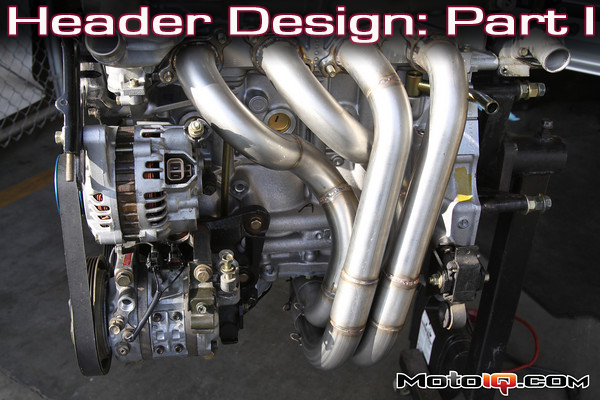,
Collector
The primary pipes join together in the collector. A collector more greatly impacts low rpm torque and won’t be as useful on an engine that operates above peak torque, such as a drag racing engine. The collector must be able to support the flow from all of the cylinders without creating excessive backpressure. It must also be large enough to signify the end of the primary pipe to produce the benefits of a tuned header. The collector outlet diameter will also vary depending on the engine. Too big a collector outlet diameter will decrease velocity and power. After the primary pipes and collector have been designed for the desired powerband, varying the collector length won’t impact power as much. A well designed collector joins together cylinders with the greatest separation in the firing order to keep an exiting pulse from one cylinder from impeding the evacuation of exhaust gases on the adjacent cylinder or from contaminating the intake charge in the next cylinder that may be on the overlap period of the power stroke.
 |
 |
 |
| Merged collectors have a smooth transition from the primary tubes to the main exhaust. Burns collectors shown here also have a venturi to keep exhaust velocity high in this area. Merged collectors have broad powerbands but require exquisite craftsmanship to build and are thus pretty expensive |
Merged collectors are the best design. A merged collector, joins the flows from the cylinders with a smooth aerodynamic taper before the collector chamber. Merged collectors break up reversion waves and provide a wider powerband and occasionally more top end power. They are more likely to be found on race cars since they are more difficult to fabricate.
 |
| A merged collector, such as this one by Burns Stainless, joins together cylinders opposite the firing order in a smooth taper before collecting the flow from other cylinders. Merged collectors produce the most performance for the entire powerband. |
Header material
Aluminized steel headers are the cheapest option for a header material, but even in a dry, warm climate with little precipitation, they will eventually corrode, which is why they are usually ceramic coated. The ceramic coating offers better thermal resistance and also helps retaun heat in the header pipes which helps velocity and flow. Stainless steel is resistant to corrosion. It is also non-magnetic and compared to mild steel, has superior high temperature properties, especially practical for exhaust systems or a header where high heat is typically found. Stainless steel has half of the thermal conductivity of mild steel and retains heat in the headers pipes much better. This improves velocity and scavenging, a reason why stainless headers make more power.
 |
| The ASP SR20DE header features a Burns merged collector and a megaphone with a reverse cone for a broader powerband. It is also made of 321 stainless steel |
The best headers are usually designed with a stainless steel from the 300 series. 321 and 304 stainless steel construction are the most common choices for aftermarket headers. 304 is the most inexpensive and readily available. It has decent strength and durability but it doesn’t offer as much high temperature fatigue resistance as 321 stainless steel does. 321 and 347 are stabilized grades of stainless steel, alloyed with titanium (321) or columbium (347), both of which have a stronger affinity for carbon at higher temperatures than the chromium found in 304 stainless steel. This also makes them more corrosion resistant. While more expensive, 321 stainless steel and 347 stainless steel are better choices for exhaust headers, especially on systems where a lot of heat builds. The 300 series of stainless steel requires special equipment to cut, bend, and weld. Some headers are manufactured with 409 stainless steel. 409 is a blend of stainless and mild steel. It is cheaper but more prone to corrosion, rust, and changes color due to heat.
Stay tuned- part 2 of header design will include all you want to know about header performance and tuning and the different header designs!
Sources




1 comment
You guys make sr20 ve headers